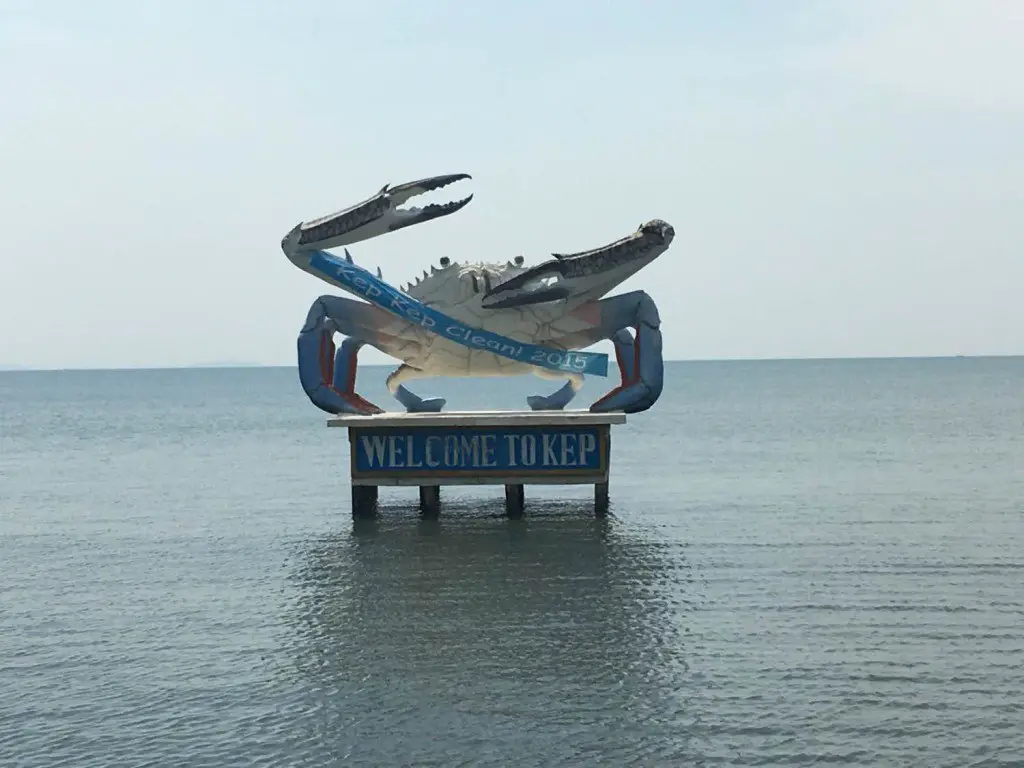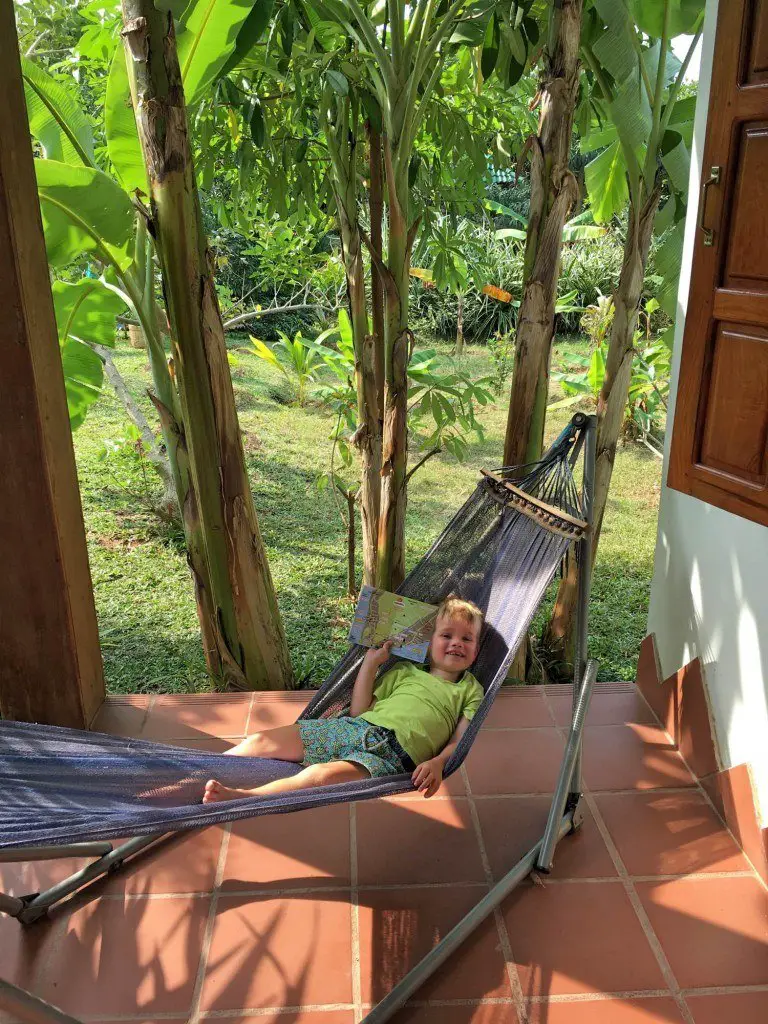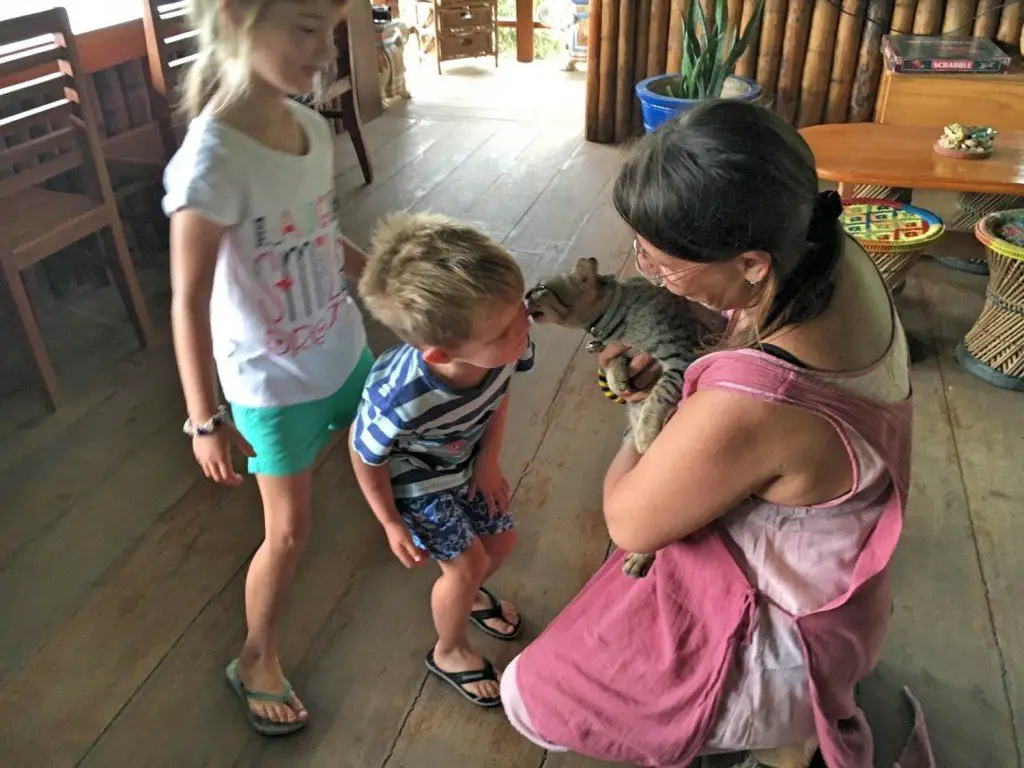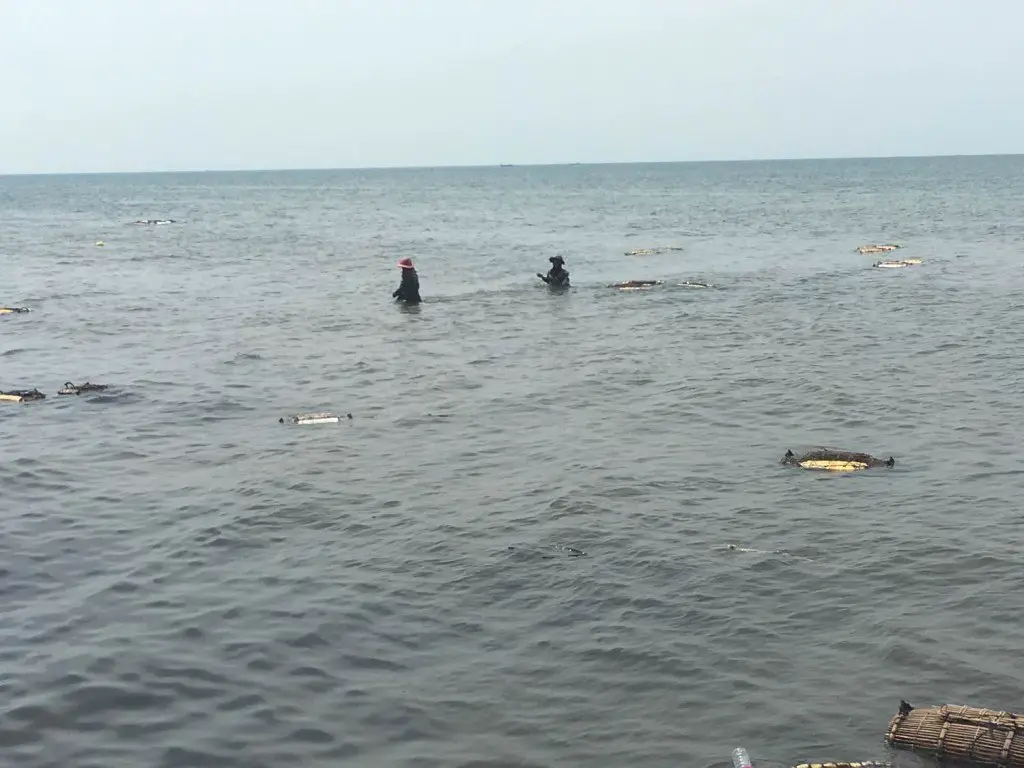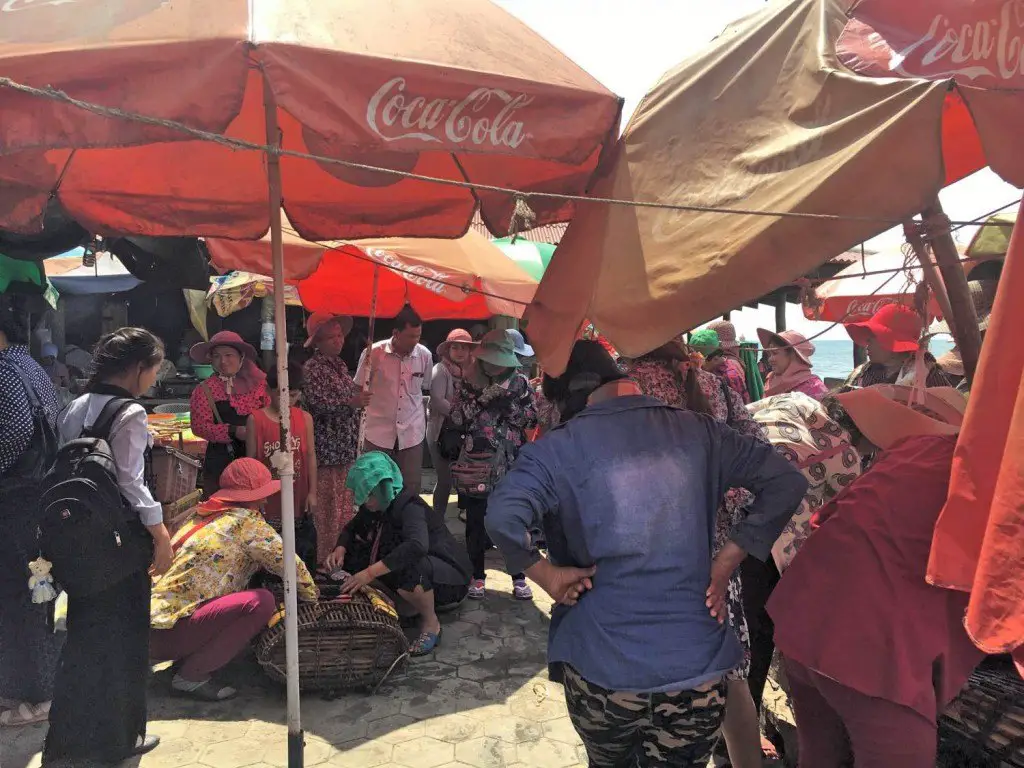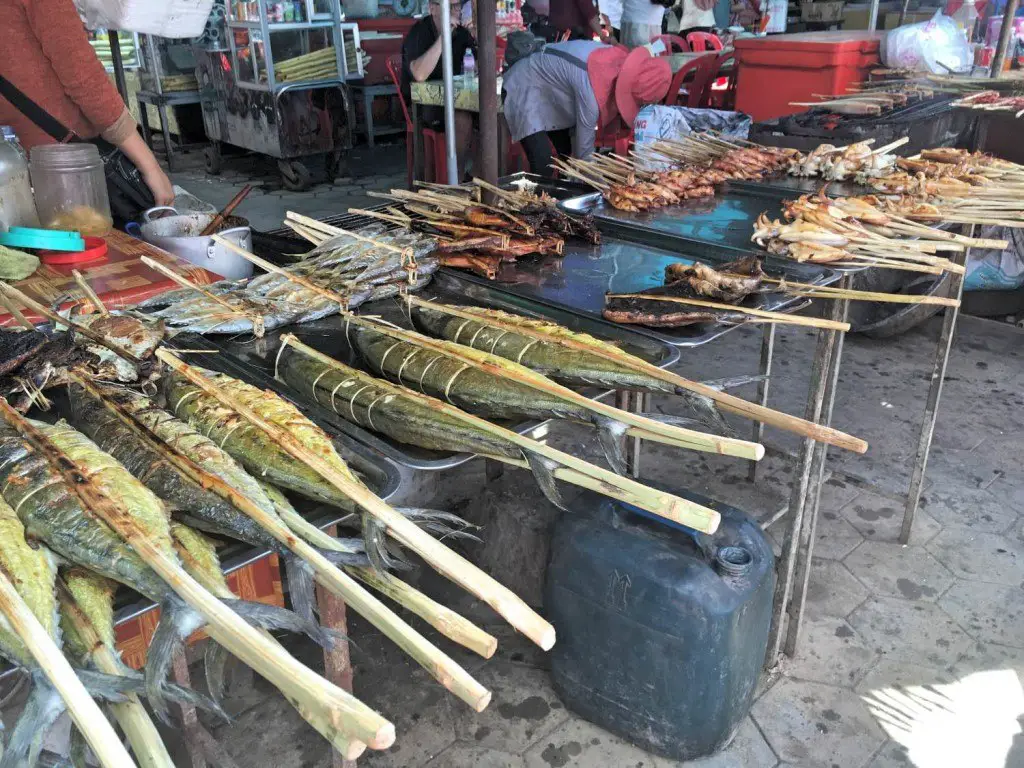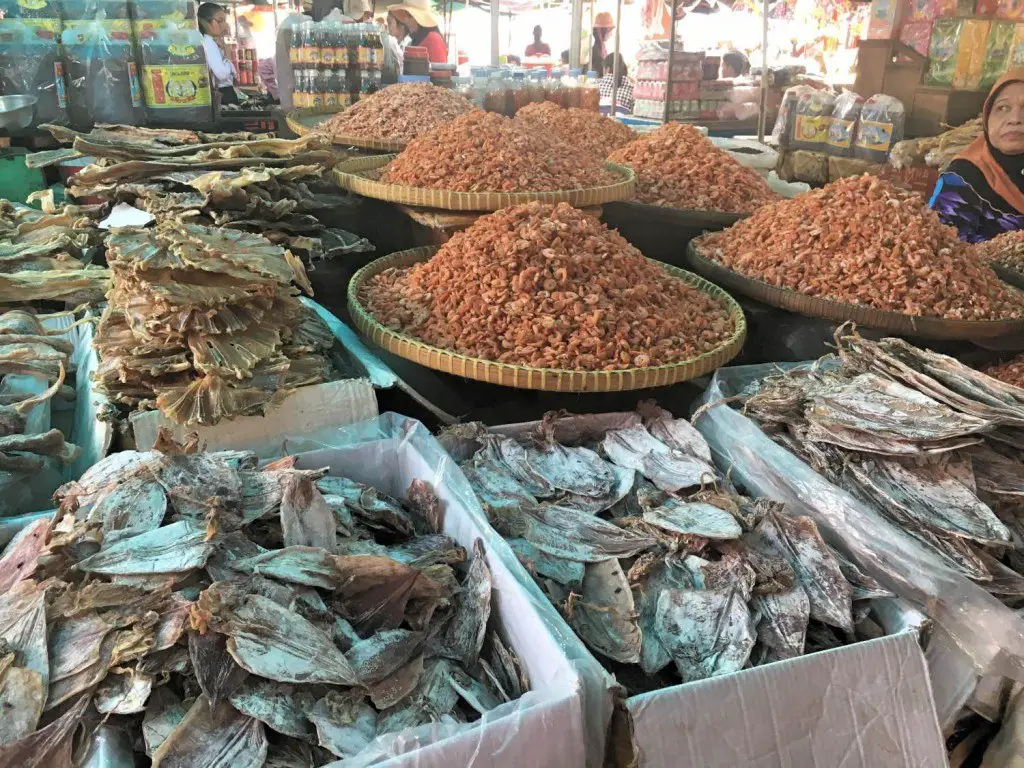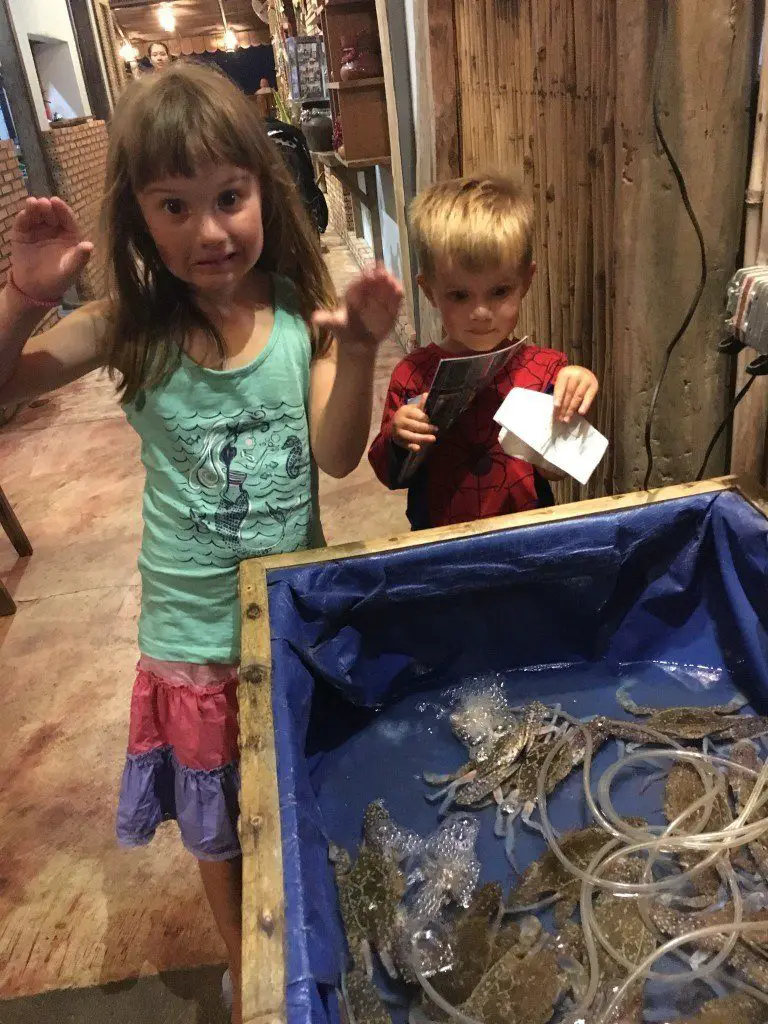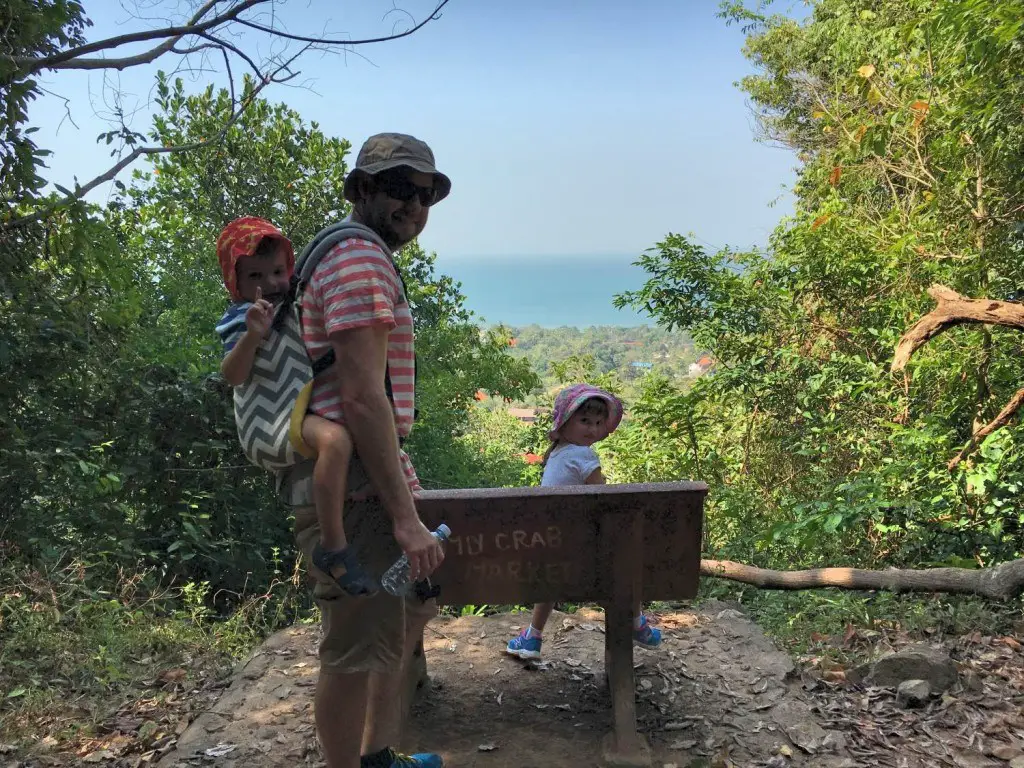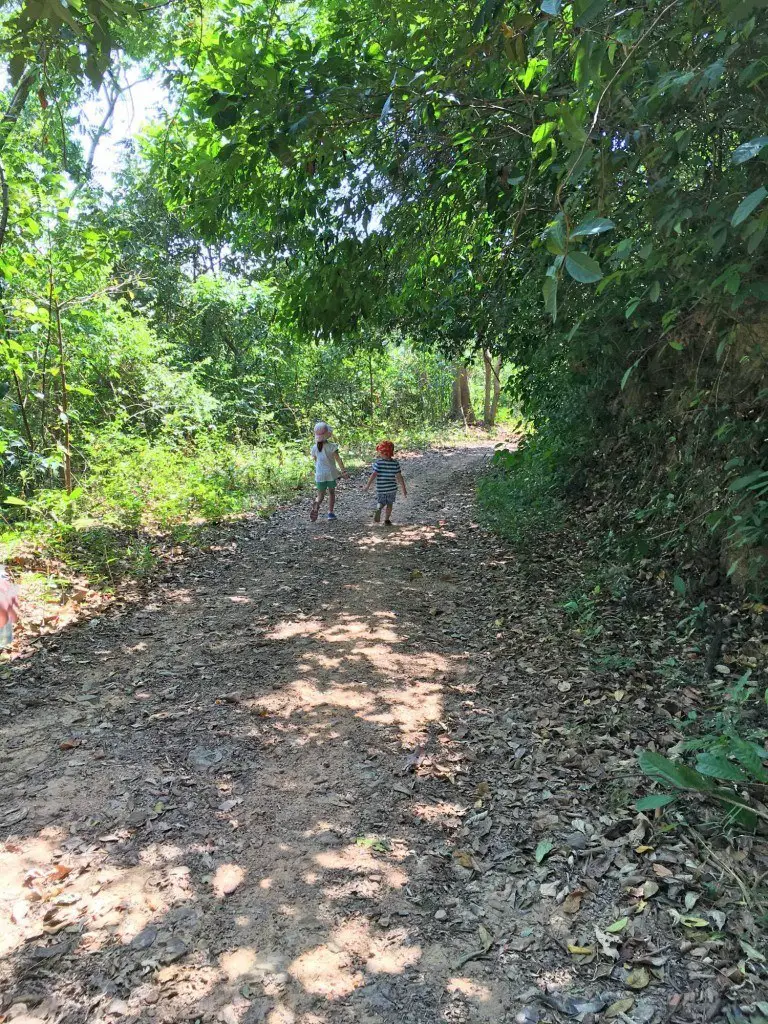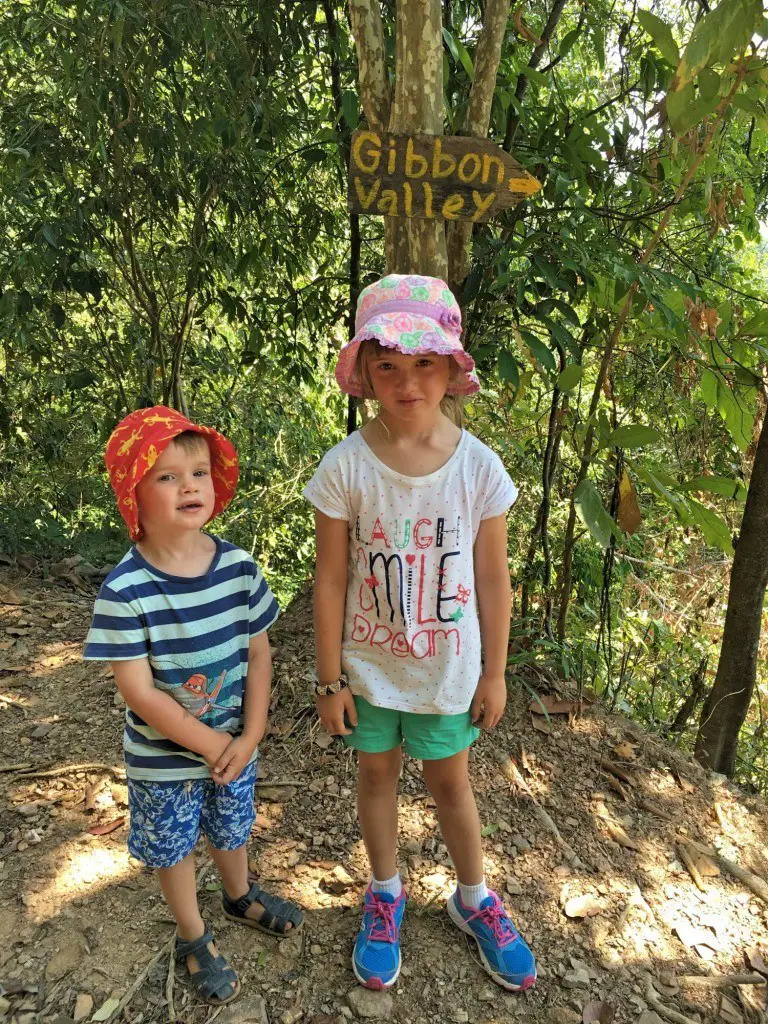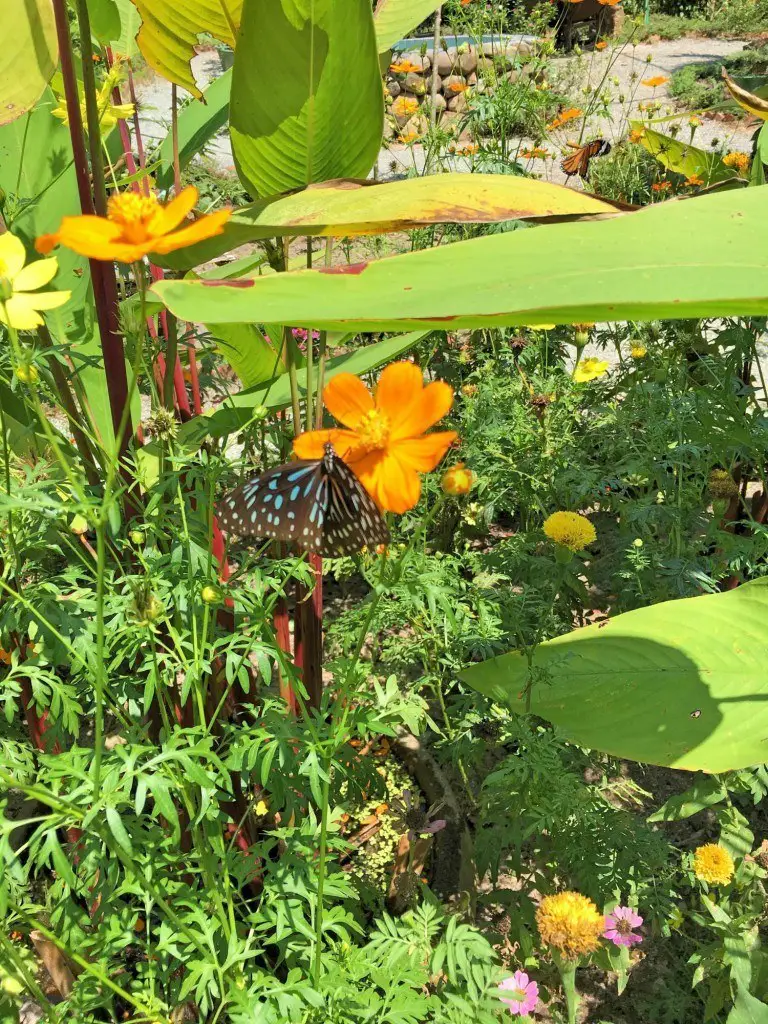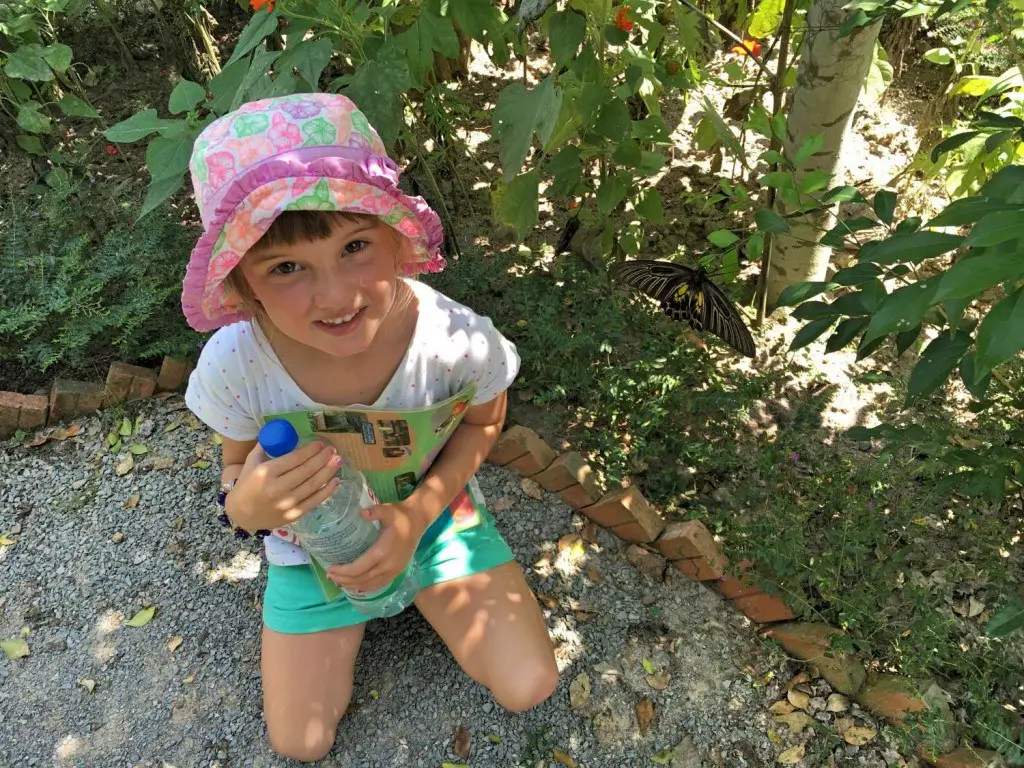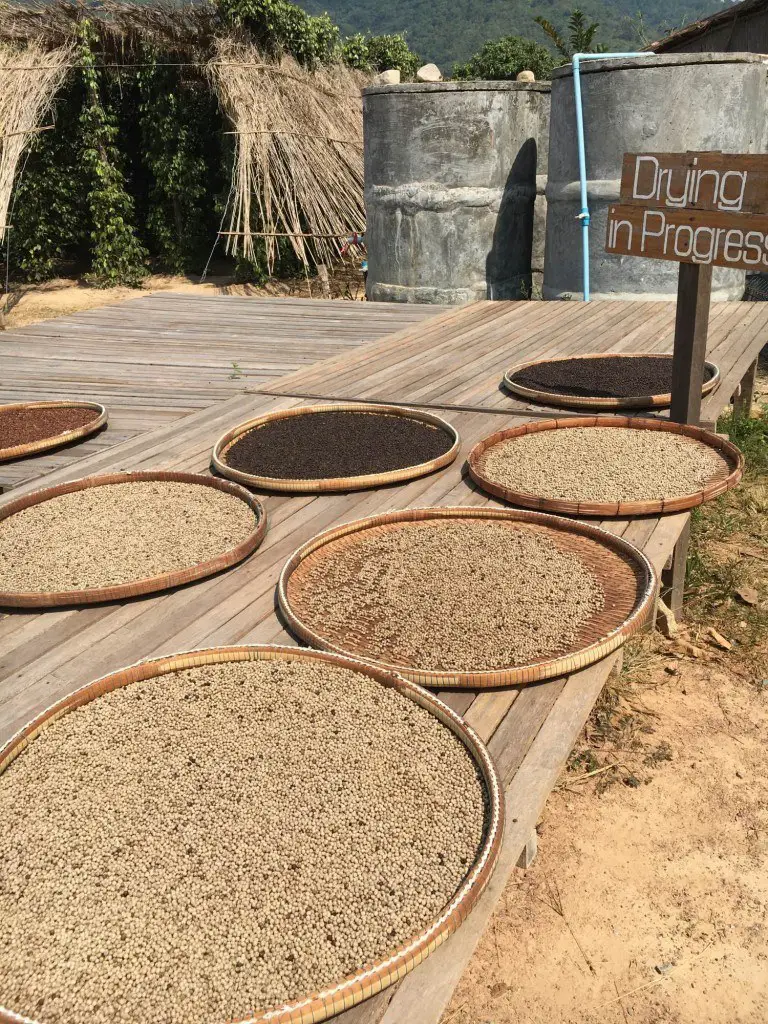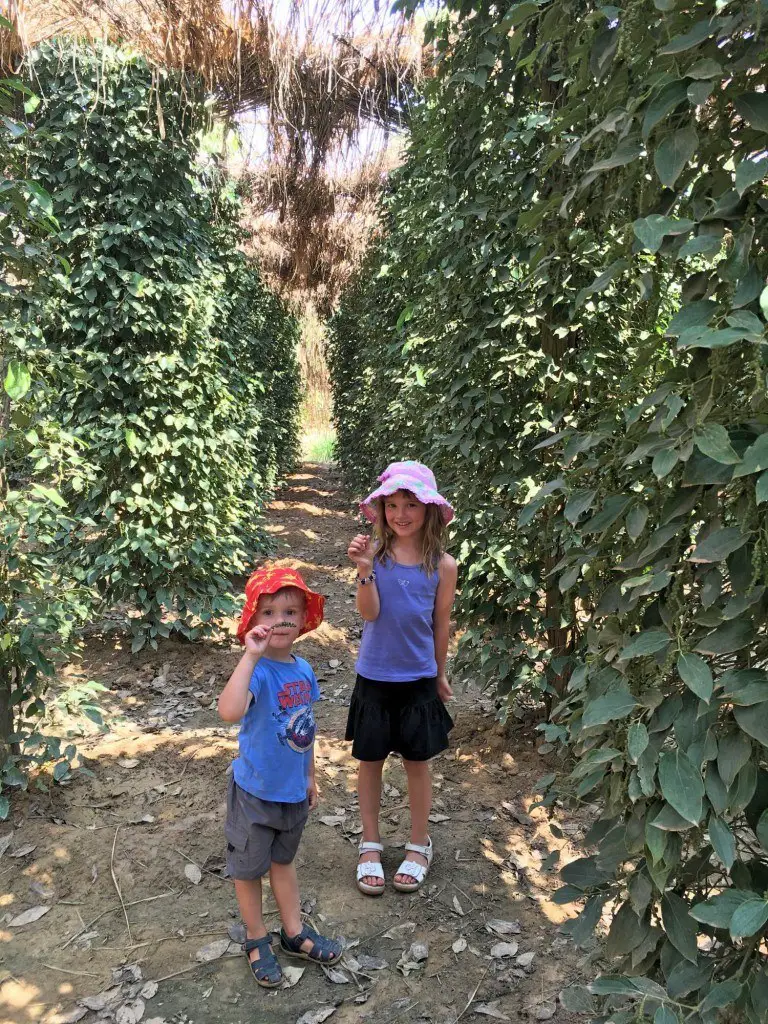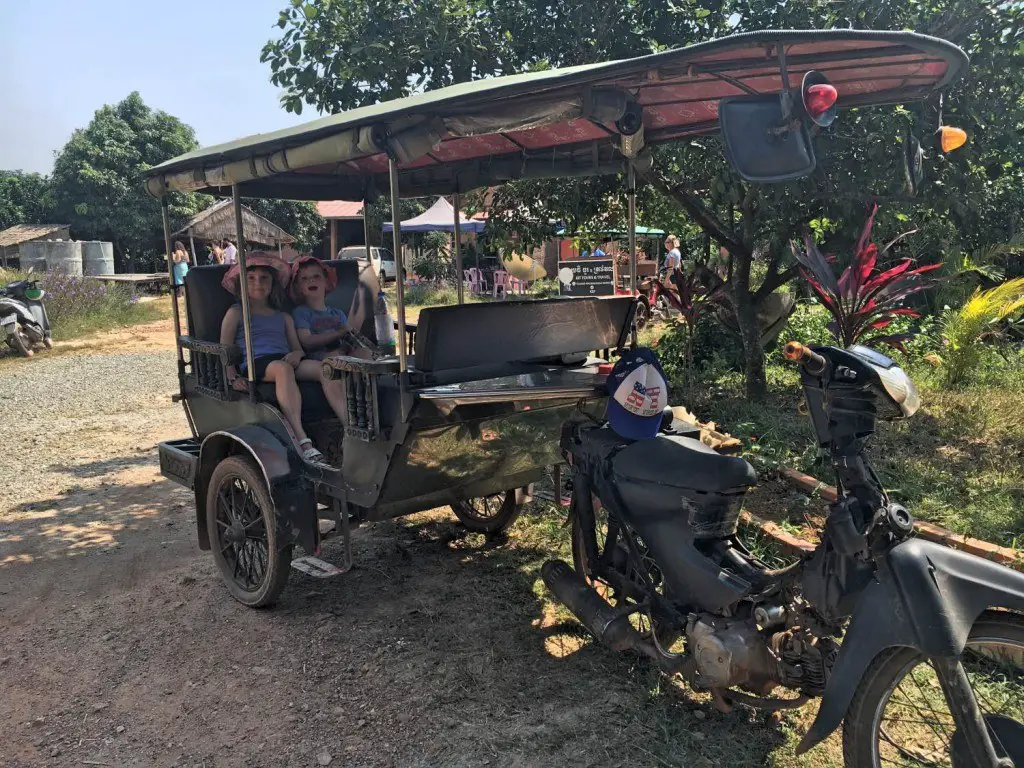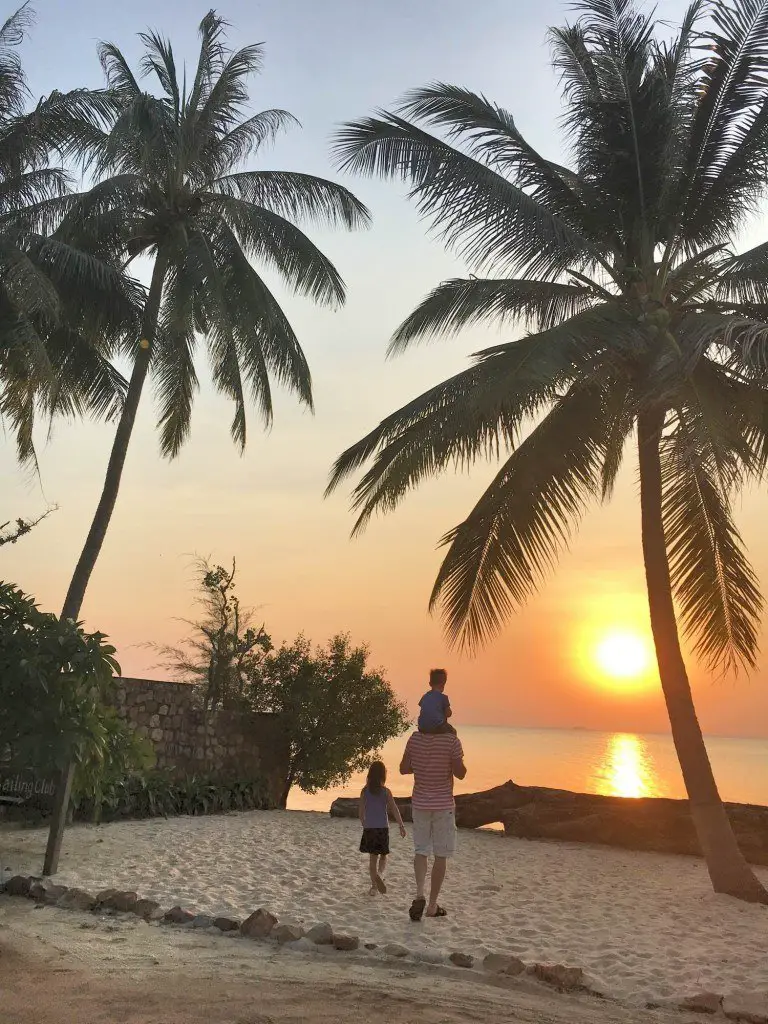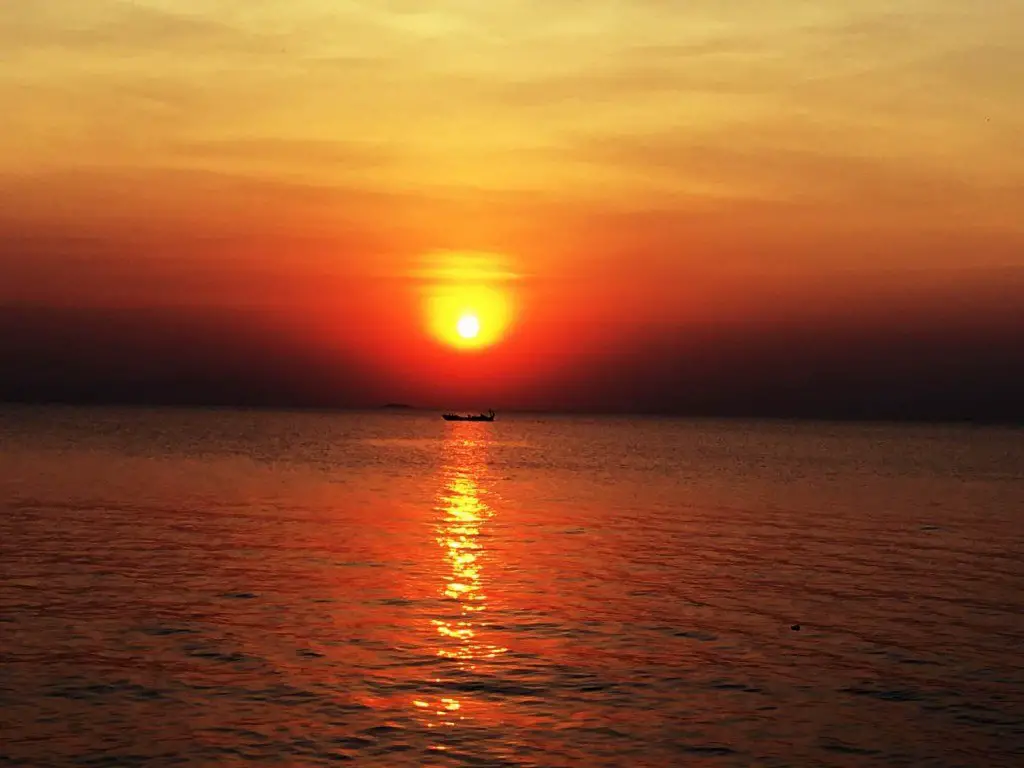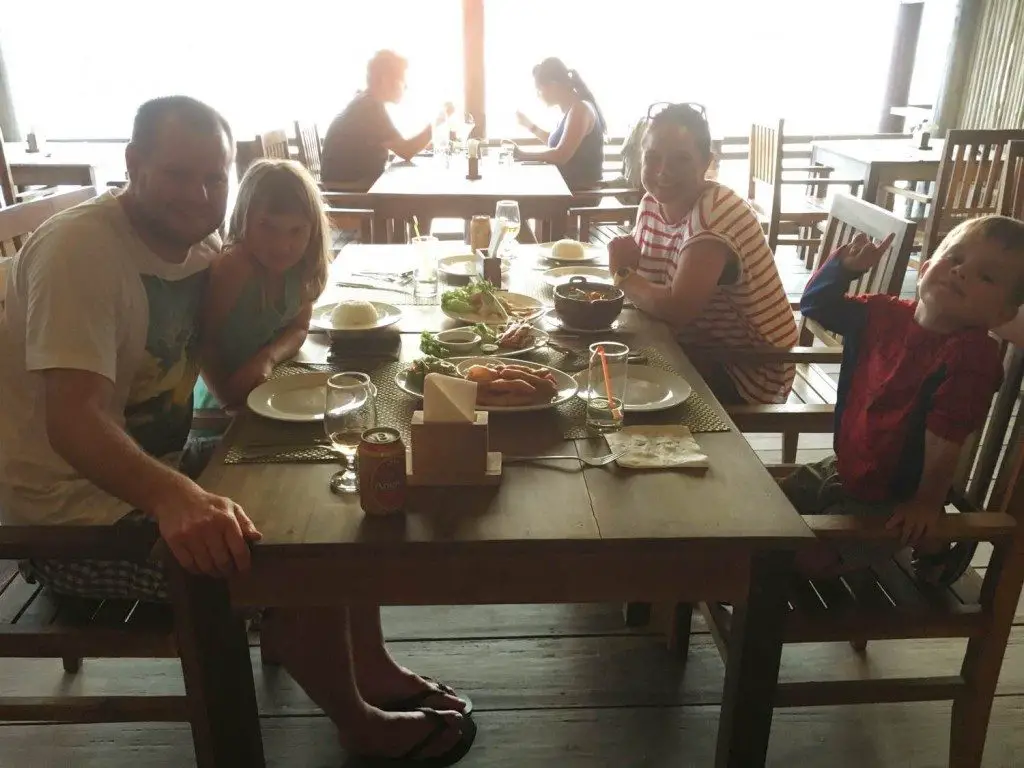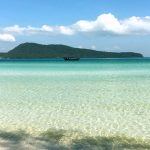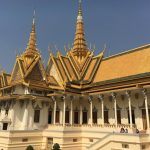After a bumpy ferry ride back to Sihanoukville, we got picked up by a pre-arranged taxi and drove a couple of hours up the coast to the small seaside town of Kep. Kep is famous for crab and seafood – it has a crab market right by the water and a whole bunch of restaurants lining the seafront that specialise in crab a hundred different ways.
In fact they love the crabs so much here, that a few years ago they erected a giant crab statue on the seafront and along with it a local legend that it comes to life on a full moon. Jack got quite obsessed with that crab and loved driving past it in a tuktuk and pointing it out to us on the map.
Kep’s tongue-in-cheek nickname is Kep-sur-mare because there are so many French people either living or visiting there. We spent the 4 days we were there speaking half in English and half in French which was great for us and kids to practice for later on in the year when we will be living there. If you want to buy charcuterie or have a salad niçoise in Cambodia then Kep is the place to go!
We stayed at Blue Kep Bungalows which are little huts set in a beautiful garden on the fringes of Kep National Park. The owners (also French, originally from Marseille) were so lovely to us and the kids, we had a great stay there. They also had a dog and cat that the kids loved playing with, and they were very nice practicing French with the kids and encouraging them. The only downside was that being right on the edge of the jungle there were a few creepy crawlies around. We had to obliterate a scorpion in our room on the first night, and we went to bed every night with the mosquito net tucked tight around us to keep not only mosquitos but any other nocturnal visitors away from us!
Here’s what we got up to in Kep:
Visiting the crab market
The crab pots are literally metres off the shore, so it’s great to go and watch the ladies (we didn’t see any men doing it) getting crabs from their pots and selling them. It got quite full on when they all surrounded the person who was buying, all vying with one another to get business. There were also lots of hot charcoal braziers set up at the crab market where they were cooking up crabs, fish and seafood. We tried the crab a few times – by itself and in other dishes and it was really lovely and sweet.
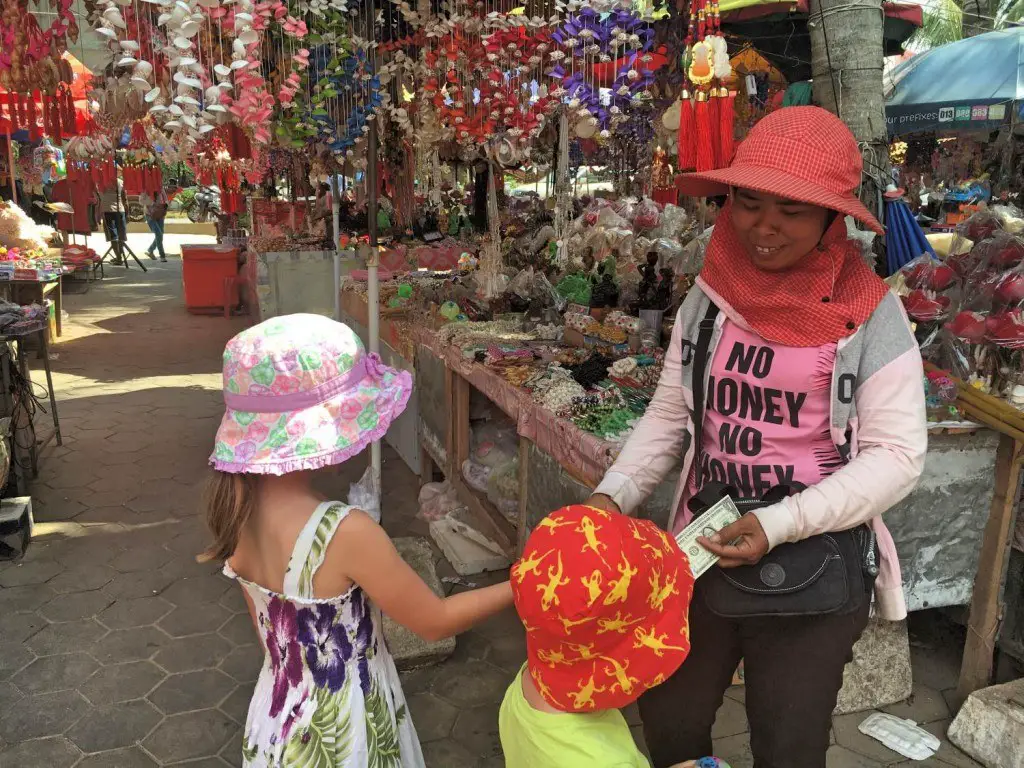
Spending their pocket money buying crap as opposed to crab at the market. Like the $2 shop on steroids.
Hiking in Kep National Park
The backdrop to Kep is a beautiful national park, where you can do an 8km trail through the jungle that has stunning views out over the sea. We took a shortcut at the back of where we were staying up a very steep hillside to join the trail part of the way along, and probably walked about 5km of it. There were interesting signs and viewpoints the whole way along telling you about the flora and fauna of the area.
So at this point in our trip it’s time for a little “warts and all” secret. You may have seen us posting pics of our gorgeous children happily walking along through various scenic trails and doing 5km walks here and there just like that. Yes hey ho, we’re the hiking family with wonderful enthusiastic children who can’t wait to see what’s just around the next corner.
Well the naughty parenting truth is that we normally BRIBE them to walk. Anywhere. Yes, we have a ‘walking star chart’ and each time they walk somewhere without moaning, whining, asking ‘are we there yet’, ‘can you carry me?’ ‘I’m tirrrrrrred (even though I’ve actually only walked 50 metres) etc, they get a star for their chart. Once Sophie has 10 stars she wants to get a manicure (aged 5 going on 15). Jack doesn’t actually care, a lot of the time he gets carried in his backpack anyway cos he is only 3. But by crikey he wants one of those stars as well, if nothing else to make sure his big sister doesn’t get one over on him…!
Kep butterfly farm
Next to the national park is the Kep butterfly farm that is set in beautifully manicured gardens, and the kids absolutely loved it. It was really educational for them on the lifecycle of the butterfly as they had a room where the caterpillars were, another place to see the pupae and newly hatched butterflies, and then the butterfly house itself which was filled with about 15 different varieties of butterflies and gorgeous bright flowers.
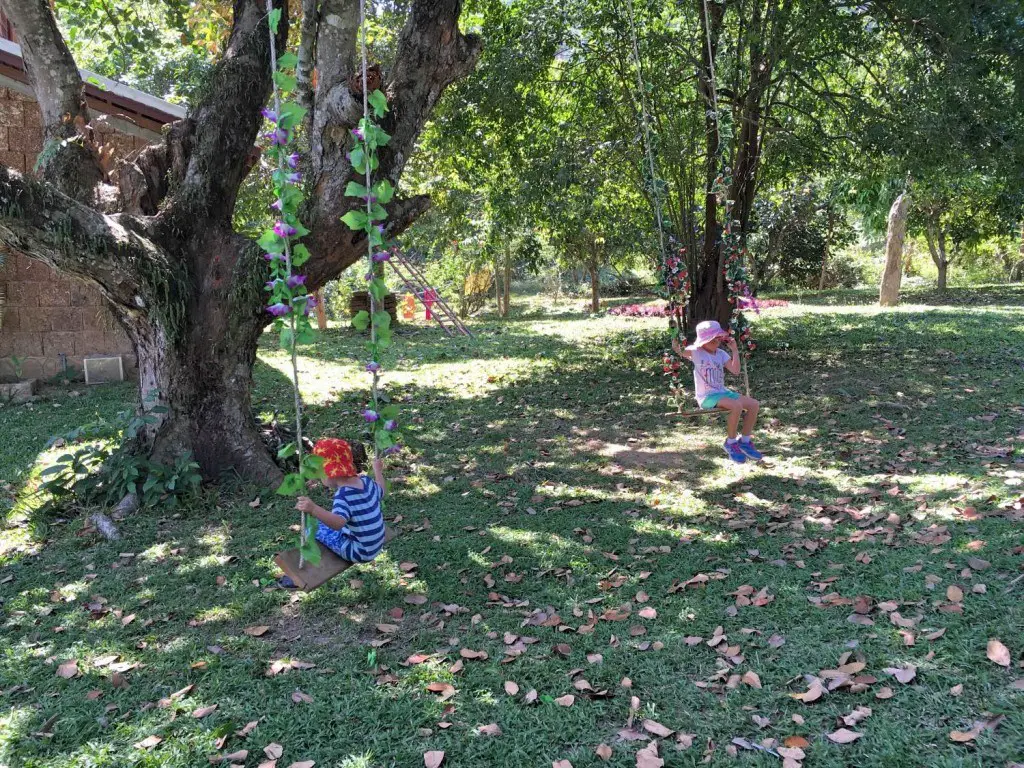
Cool swings at the Kep Butterfly farm. About 5 seconds after this shot was taken, Jack arsed off the swing and it was the end of the world.
Visiting a pepper farm and seeing where Kampot pepper comes from
Mike was feeling a bit under the weather one day, so the kids and I took a tuktuk down a bumpy dirt track road out to the country and visited a pepper farm. Kampot pepper is supposedly the best in the world, it is strictly certified that it comes from a particular region in Cambodia – a bit like how champagne can only come from a region in France. I have a bit of a fascination with seeing where food comes from in its ‘original’ state and I remembered watching Rick Stein visit a Kampot pepper farm with fascination on one of his shows.
A couple of English girls volunteering at the farm told us all about how the pepper is grown, the differences between black, white and red pepper (black is the dried peppercorns, red is more expensive as there are only about 3-4 red berries that appear per pepper tree, and white is where the pepper is dried for a bit and then boiled and the outer layer removed giving the white inner).
It’s a delicate balance growing the pepper – too much water and the vines die, too much sun and they shrivel up. So they cover the plantations up with coconut fronds during winter to make sure they don’t get too much direct sunlight, and take the covers off in summer so they get enough rain. There are only two seasons here – winter when it’s dry and hot and summer when it’s wet and hot! They fertilise the vines with a secret cow and bat dung mixture.
Apparently the quartz in the surrounding soil is what makes the pepper grow so well in this region, the only other place that has a similar geological make up is the Burgundy vineyards of France. That’s why a big glass of Burgundy red goes so well with a Kampot pepper steak. OK I made that bit up 😉
We got to wander through the pepper vines and explore for a bit. The pepper does taste great as we had it on a couple of dishes, and we also tried the green peppercorns still on the vine stir-fried with squid – yum!
A quick note about tuktuks in Cambodia. The actual term for them here is ‘remork’ and they’re a type of carriage that is towed behind a motorbike. The kids love travelling in them but we need to hold on to them tight – as you can see there are no doors! You generally only go about 40km an hour in them and they’re a pleasant way to travel in the heat as you get the breeze blowing through your hair. They go anywhere, up the bumpiest dirt track and make for a sure-fire bone shaking ride.
The rest of the time we spent relaxing in the lovely gardens at our accommodation and admiring the beautiful sunsets that Kep is renowned for.
Next stop: time to get out of the countryside and back to the capital city of Phnom Penh, just in time for Chinese New Year.

